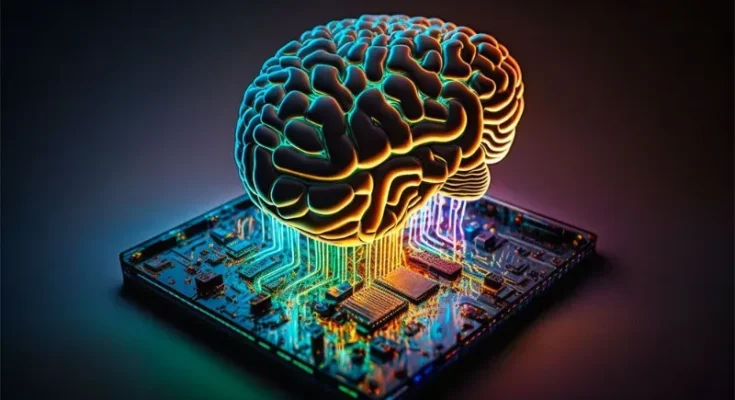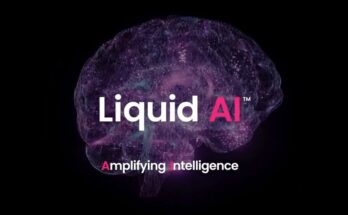The data center industry faces challenges in sustaining the significant computing power required for AI training and running large language models, which necessitate advanced data center architecture and thousands of GPUs in the pre-training phase.
Cloud service providers are expected to scale up to 1GW+ capacities costing $10-25 billion by the end of the decade, according to Bain & Company consultancy. This is due to the limited capacity of many companies and the dominance of tech giants like Alphabet, Microsoft, AWS, and Alibaba in the space.
What Role Can DePIN Play in AI’s Development?
The competition for AI resources is increasing, with growing data center requirements straining capabilities. Edge AI is emerging as a solution to maximize resources, as demand outpaces cloud capacity. AI algorithms and models are deployed on devices at the edge of the network, enabling real-time data processing and reducing cloud network load.
Network3.ai CEO Rock Zhang highlights the importance of physical and digital networks in artificial intelligence development and deployment. DePIN, a Web3 concept, uses blockchain technology, tokenization, smart contracts, and decentralized governance mechanisms to incentivize physical resources like data storage, energy generation, sensors, wireless communication devices, and computing power.
Blockchain networks enable decentralized integration of physical assets, allowing DePIN to aggregate small-scale infrastructure and decentralize control, improving transparency and security, reflecting the Web3 ideal of decentralized control and community ownership.
Network3’s Zhang explains that DePIN, a decentralized network of IoT devices, compute nodes, and sensors, reduces reliance on centralized cloud infrastructure, enabling real-time, cost-efficient AI training and inference. Tokenizing assets in DePIN supports efficient, cost-effective, and secure infrastructure development.
Physical Location Can Reduce Latency
DePIN aims to address the AI computing resource shortage by establishing networks of individuals with idle GPUs and edge devices, pooling their computing power for on-demand AI training, thereby reducing latency and overhead costs, thereby offering higher capacity at lower fees.
DePIN offers AI startups an affordable alternative to big cloud computing providers, allowing more innovation and democratizing access to GPUs beyond big tech, research organizations, and governments, potentially accelerating AI deployments.
Key DePIN Developments in the AI Field
Zhang of Network3.ai predicts three key developments in DePIN and their significance for the advancement of AI:
1. Massive Decentralized Compute Scaling
AI workloads are already being served by idle hardware, GPUs, and edge devices, and decentralized computing networks are rapidly growing in popularity.
“I anticipate that this will result in a change in the training of AI models in 2025, moving away from centralized supercomputing clusters and toward distributed networks driven by DePINs.”
2. Tokenized Rewards for Contributions to AI
People and businesses will be encouraged to contribute infrastructure, data, and processing power by DePINs’ token-based platforms.
“This tokenization will enable smaller players to profit from their resources and take part in global innovation, democratizing access to AI development.”
3. Improved Privacy and Security of AI
“DePINs’ decentralized structure naturally improves security and privacy. By dispersing information and calculations over networks, DePINs reduce vulnerabilities and guarantee adherence to more stringent international data privacy laws. This is especially important as AI applications grow more sensitive and widespread.
The 2025 DePIN Outlook
Zhang claims that as 2025 draws near, the potential of DePINs is becoming increasingly apparent.
“DePINs will serve as the foundation for a decentralized AI economy, facilitating more fair growth and lowering entry hurdles for industries and regions that are underrepresented.
In addition to offering the infrastructure required for cutting-edge advancements like generative AI at scale, we may anticipate that DePINs will enable ground-breaking applications in healthcare, agriculture, and energy management as the technology advances.
According to Zhang, 2025 will be a turning point when DePIN and AI transition from testing to widespread use, “fundamentally transforming industries and reshaping how we build and interact with technology.”
The Obstacle That Remains
DePIN is a promising concept, but these networks won’t be able to realize their full potential unless enough people are willing to donate and maintain the actual infrastructure.
Obstacles include the expensive initial setup expenses, especially for GPUs, and the difficulty in comprehending the advantages of participating. To illustrate the advantages and possible effects of decentralizing physical networks, education will be essential.
As the industry grows, early adopters who can overcome these obstacles will have a competitive edge.
The Bottom Line
DePIN can assist in resolving the requirement for enormous quantities of processing capacity, which is a problem with the widespread use of AI, by pooling computer resources from people and organizations worldwide.
By allowing entrepreneurs and researchers to contribute to growth and innovation, DePIN has the ability to democratize access to AI infrastructure and ensure that it is not exclusively controlled by the big giants.
By 2025, DePIN can help scale distributed networks for training AI models, provide token-based rewards for AI development contributions, and improve security and privacy.



